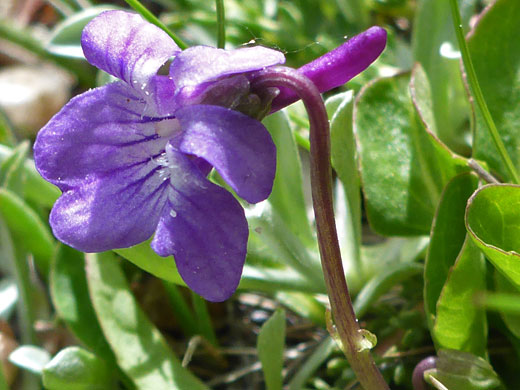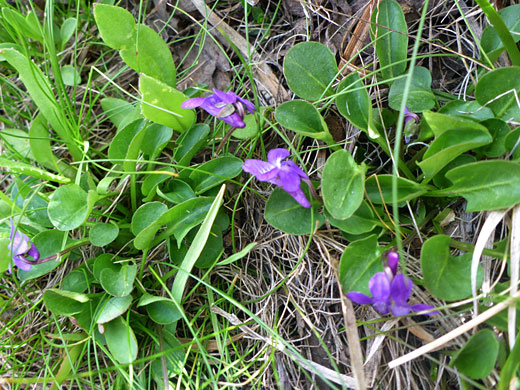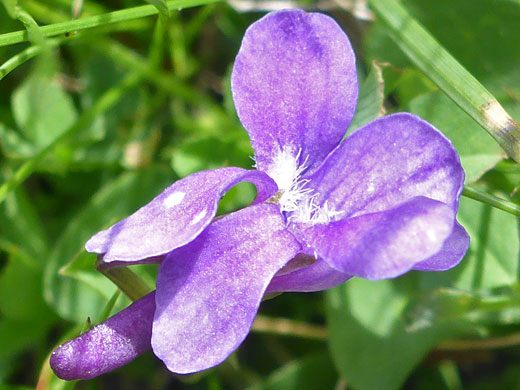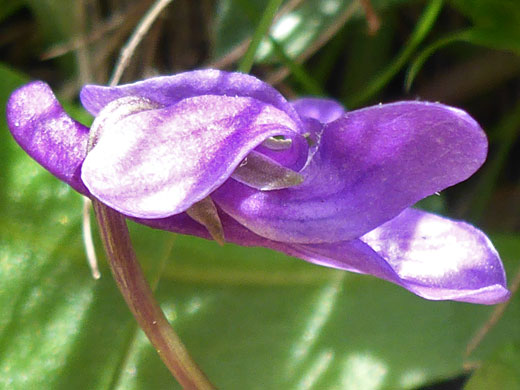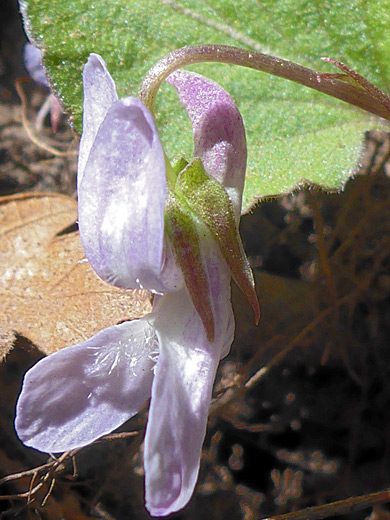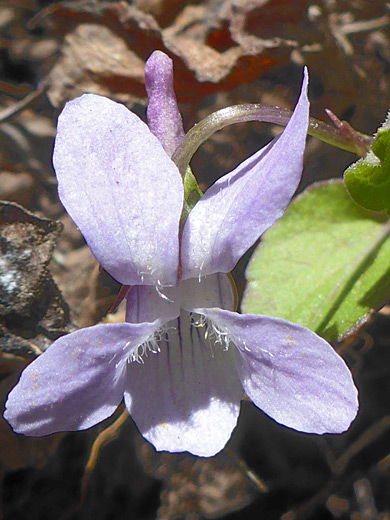Common names:
Blue violet, western dog-violet
Family:
Scientific name:
Viola adunca
Main flower color:
Range:
The northern Great Plains, the Rocky Mountain states and all states to the west
Height:
Up to 12 inches
Habitat:
Woodland, meadows, generally damp locations, from sea level to 12,000 feet
Leaves:
Basal and cauline, with stipules; blades are round to ovate or cordate, up to 2.5 inches long, on stalks of up to 5 inches
Season:
April to August
Viola adunca is a common and widespread species, especially across the Rocky Mountains, the Sierra Nevada, the Cascades, and coastal regions of the Pacific states, from San Francisco northwards. Plants produce up to five stems, erect to decumbent, hairless to sparsely hairy. Leaves grow at the base and along the stem, and are usually hairless. Leaf margins may be entire or shallowly sharp-toothed.
Flowers are produced singly at the end of slender stalks up to 5 inches, hairless or finely hairy. Petals are purple, whitish towards the base, occasionally paler, even nearly all white. The lower three petals are crossed by purple veins, while the lateral pair have a dense patch of white hairs towards the base. The spur is light to dark purple, usually straight.
Two varieties of viola adunca are currently recognized: var bellidifolia of the Rocky Mountains is smaller, at most 3 inches tall, with flower stalks of one to two inches, while the more widespread var adunca is a generally larger, more robust plant.
Flowers are produced singly at the end of slender stalks up to 5 inches, hairless or finely hairy. Petals are purple, whitish towards the base, occasionally paler, even nearly all white. The lower three petals are crossed by purple veins, while the lateral pair have a dense patch of white hairs towards the base. The spur is light to dark purple, usually straight.
Two varieties of viola adunca are currently recognized: var bellidifolia of the Rocky Mountains is smaller, at most 3 inches tall, with flower stalks of one to two inches, while the more widespread var adunca is a generally larger, more robust plant.
All Contents © Copyright The American Southwest | Comments and Questions | Contribute | Site Map


